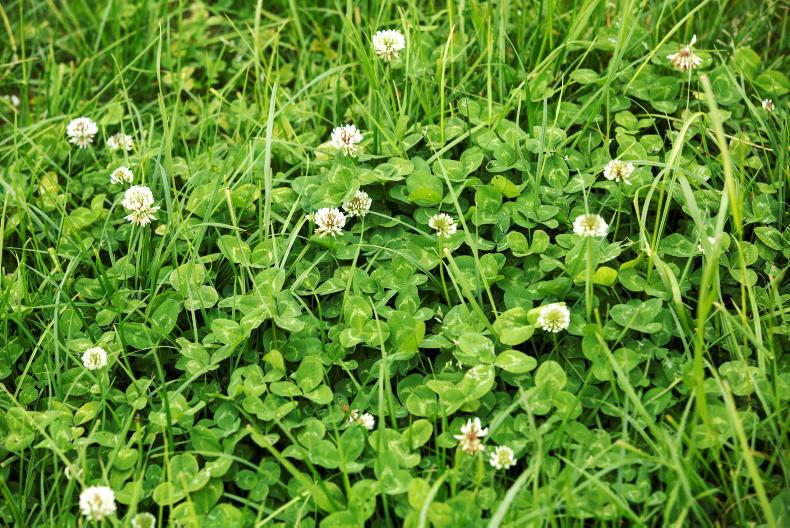Incorporating clover in a reseed is advisable in light of its potential to fix nitrogen and ability to increase animal performance.
The big dilemma is if there is a significant weed problem in the sward and if this is likely to be sufficiently addressed by burning off the vegetation before reseeding.
If this is not likely to be the case and there is a high likelihood of persistent problems with docks, thistles or rushes after reseeding, then delaying incorporating clover, and as a result widening the range of herbicides available for post-emergence spraying, may be the best route to take.
In terms of clover selection, small- and medium-leaf varieties will achieve greater persistence in swards grazed by sheep and cattle.
The Department of Agriculture and Teagasc’s Pasture Profit Index should be used when selecting the most appropriate grass/clover variety. A detailed list and explanation can be found here.
Grassland management
Grass growth rates are variable, ranging from as low as 20kg DM/ha to 30kg DM/ha, where fertiliser usage is low or soil moisture deficit is an issue, to upwards of 70kg DM/ha, where nitrogen is being regularly applied at 20-25 units after grazing.
The fact that soil temperatures are high will deliver a good response where fertiliser is applied in advance, or in tandem with recent rainfall. Regular nitrogen application will also help to improve sward quality and ensure high-quality grass is available for finishing lambs.
Where silage has been harvested, it is important to address possible depletion of soil fertility by using a compound fertiliser, or targeting these areas for application of slurry or farmyard manure.
Read more
Lamb prices fall
Watch: Irish sheepdog tops €8,000 at UK sale
Incorporating clover in a reseed is advisable in light of its potential to fix nitrogen and ability to increase animal performance.
The big dilemma is if there is a significant weed problem in the sward and if this is likely to be sufficiently addressed by burning off the vegetation before reseeding.
If this is not likely to be the case and there is a high likelihood of persistent problems with docks, thistles or rushes after reseeding, then delaying incorporating clover, and as a result widening the range of herbicides available for post-emergence spraying, may be the best route to take.
In terms of clover selection, small- and medium-leaf varieties will achieve greater persistence in swards grazed by sheep and cattle.
The Department of Agriculture and Teagasc’s Pasture Profit Index should be used when selecting the most appropriate grass/clover variety. A detailed list and explanation can be found here.
Grassland management
Grass growth rates are variable, ranging from as low as 20kg DM/ha to 30kg DM/ha, where fertiliser usage is low or soil moisture deficit is an issue, to upwards of 70kg DM/ha, where nitrogen is being regularly applied at 20-25 units after grazing.
The fact that soil temperatures are high will deliver a good response where fertiliser is applied in advance, or in tandem with recent rainfall. Regular nitrogen application will also help to improve sward quality and ensure high-quality grass is available for finishing lambs.
Where silage has been harvested, it is important to address possible depletion of soil fertility by using a compound fertiliser, or targeting these areas for application of slurry or farmyard manure.
Read more
Lamb prices fall
Watch: Irish sheepdog tops €8,000 at UK sale






 This is a subscriber-only article
This is a subscriber-only article










SHARING OPTIONS: